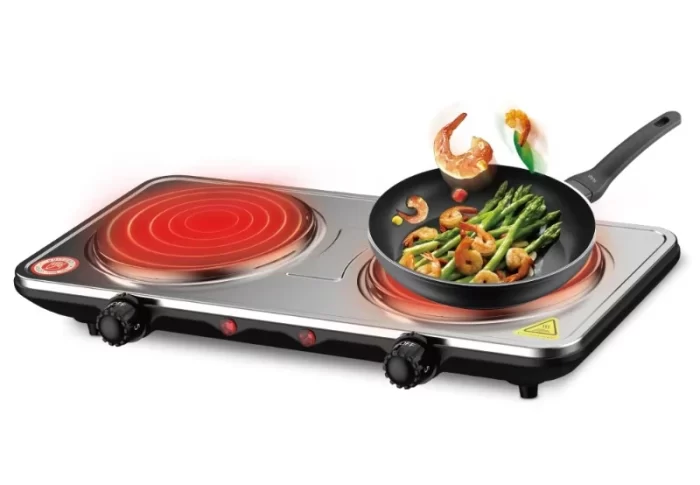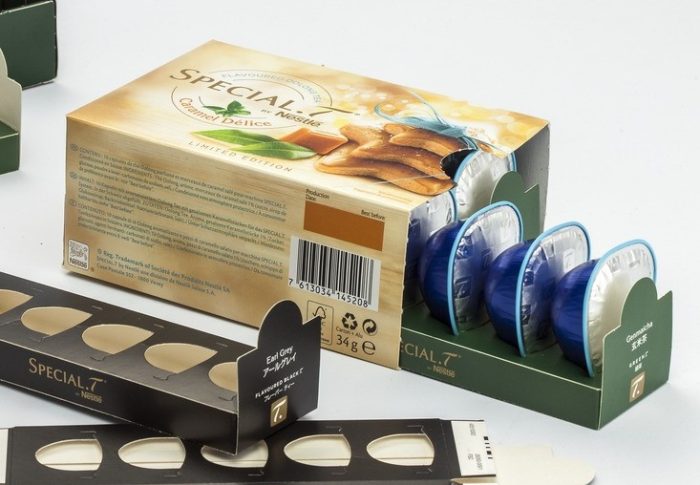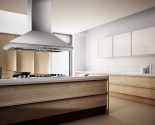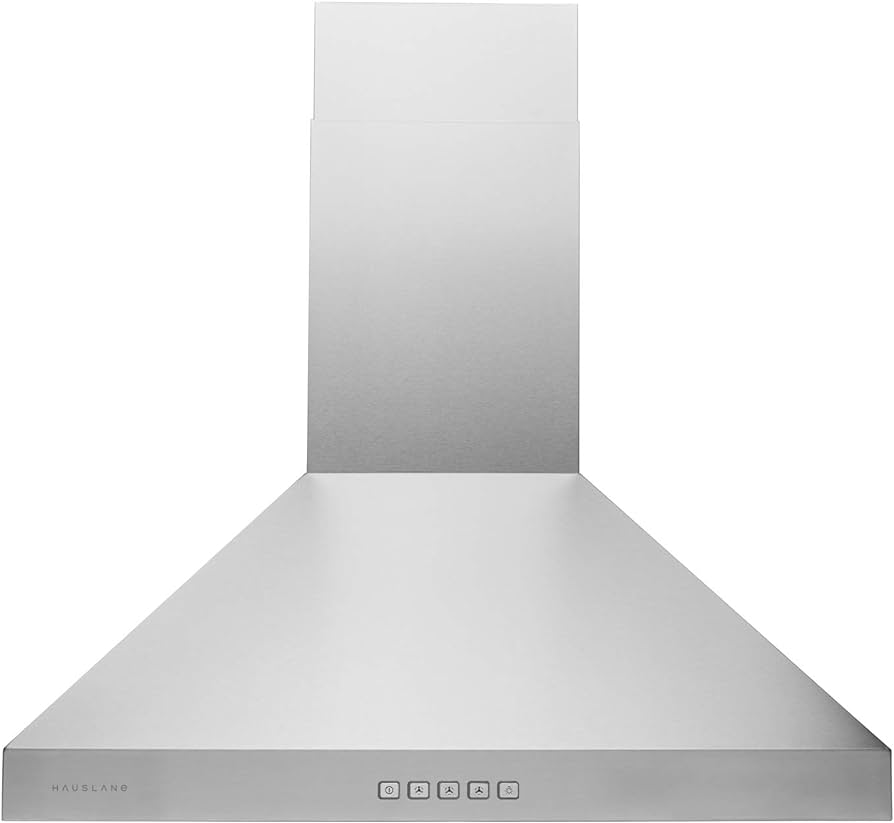
What Should Be the Distance Between a Range and a Hood?
Introduction:
Determining the correct distance between a range and a hood is crucial for achieving optimal kitchen ventilation, ensuring safety, and maintaining functionality. This comprehensive guide examines the recommended distance, factors influencing placement, types of hoods, benefits of correct installation, and practical installation tips. By understanding these specifics, you can ensure that your kitchen ventilation system is both efficient and effective.
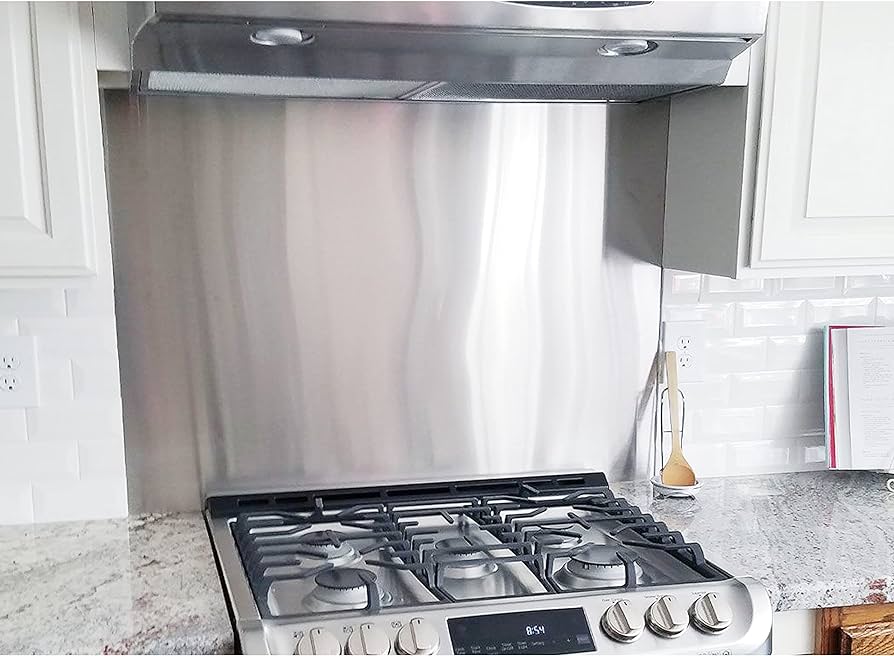
What Should Be the Distance Between a Range and a Hood?
Ideal Distance Between Range and Hood
The appropriate distance between a range and a hood is essential for capturing smoke, steam, and odors effectively while cooking. Recommended distances vary based on the type of range and range hood.
Standard Distance Recommendations: For most residential kitchens, the standard distance between a range and a hood is typically between 24 and 30 inches. This range ensures that the hood efficiently captures cooking byproducts while maintaining safety and convenience.
Type of Range: The type of range (electric or gas) affects the recommended hood height. Electric stoves generate less heat, allowing for a hood distance of 24 to 30 inches. For gas stoves, which produce more heat, a slightly closer distance of 20 to 24 inches is recommended.
Type and Power of Hood: The type and power of the range hood (measured in cubic feet per minute or CFM) also influence the distance. More powerful hoods with higher CFM ratings can be installed at the higher end of the recommended distance range, while less powerful units may require closer installation.
Manufacturer Specifications: Always refer to the specific installation guidelines provided by the range hood manufacturer. These guidelines are tailored to the design and performance capabilities of the particular hood model.
Safety Considerations for Range Hood Installation
Ensuring safety is a primary concern when installing a range hood. Proper distance helps prevent potential hazards and enhances the hood’s effectiveness.
Heat and Fire Safety: Installing the hood too close to the range can pose fire and heat hazards, particularly with gas stoves. Maintaining the appropriate distance helps prevent excessive heat exposure to the hood and its components.
User Comfort: Proper distance ensures the hood does not obstruct the user’s view or impede movement while cooking. It also provides adequate headspace, making cooking and cleaning tasks more comfortable and efficient.
Airflow Efficiency: The recommended distance ensures that the hood’s airflow is optimized, effectively capturing and expelling smoke, steam, and odors. Inadequate distance can hinder the hood’s performance, leading to poor ventilation.
Preventing Grease Build-Up: Maintaining the correct distance helps reduce grease build-up on the hood and surrounding surfaces, promoting easier cleaning and a more hygienic kitchen environment.
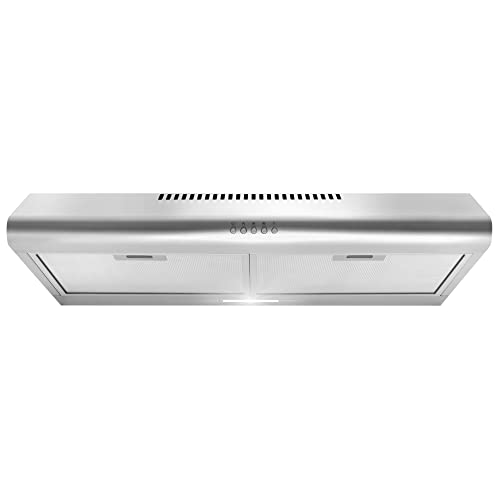
Factors Influencing Range Hood Distance
Several factors influence the ideal distance between a range and a hood, including kitchen design, cooking habits, and specific requirements of the range and hood.
Kitchen Layout and Design: The overall design and layout of your kitchen play a role in determining the hood distance. Factors such as cabinet placement, ceiling height, and the location of the range impact where and how the hood should be installed.
Cooking Habits: Your cooking frequency and style affect the ideal hood distance. For heavy cooking that produces significant smoke and steam, a distance closer to 24 inches can enhance ventilation efficiency.
Ventilation Ductwork: The routing and length of the ventilation ductwork can affect hood performance. Ensuring a direct and short path to the exterior minimizes airflow resistance, allowing flexibility in hood distance placement.
Ceiling Height: Ceiling height limitations might necessitate adjustments to the standard hood distance. For higher ceilings, ensure the hood’s power (CFM) is sufficient to maintain efficient ventilation, even if installed at the higher end of the distance range.
Personal Preferences: Personal preferences regarding the hood’s visibility, ease of use, and aesthetic integration with the kitchen design can influence the chosen distance, provided it aligns with safety and performance guidelines.
Types of Range Hoods and Their Distance Considerations
Various types of range hoods have different distance requirements based on their design and functionality. Understanding these differences helps in selecting and installing the right hood for your kitchen.
Under-Cabinet Hoods: Under-cabinet range hoods are mounted beneath kitchen cabinets. The recommended distance for these hoods is typically 24 to 30 inches above the range to ensure effective capture of smoke and steam.
Wall-Mounted Hoods: Wall-mounted range hoods are fixed to the wall above the range and often feature a chimney design. They generally follow the same 24 to 30-inch distance recommendation, although powerful models might allow for slightly higher placement.
Island Hoods: Island range hoods are installed above cooktops located on kitchen islands. These hoods must cover a broader area due to the absence of walls around the cooktop. The standard distance is 24 to 30 inches, ensuring adequate coverage and ventilation.
Downdraft Hoods: Downdraft range hoods are installed within the cooktop and rise when needed. These hoods do not follow traditional distance guidelines as they pull fumes downward rather than upward. They are ideal for kitchens with ceiling height limitations.
Ceiling-Mounted Hoods: Ceiling-mounted range hoods are less common and designed to blend with the ceiling. These hoods may need to be installed higher than 30 inches but require powerful motors (high CFM) to compensate for the increased distance.
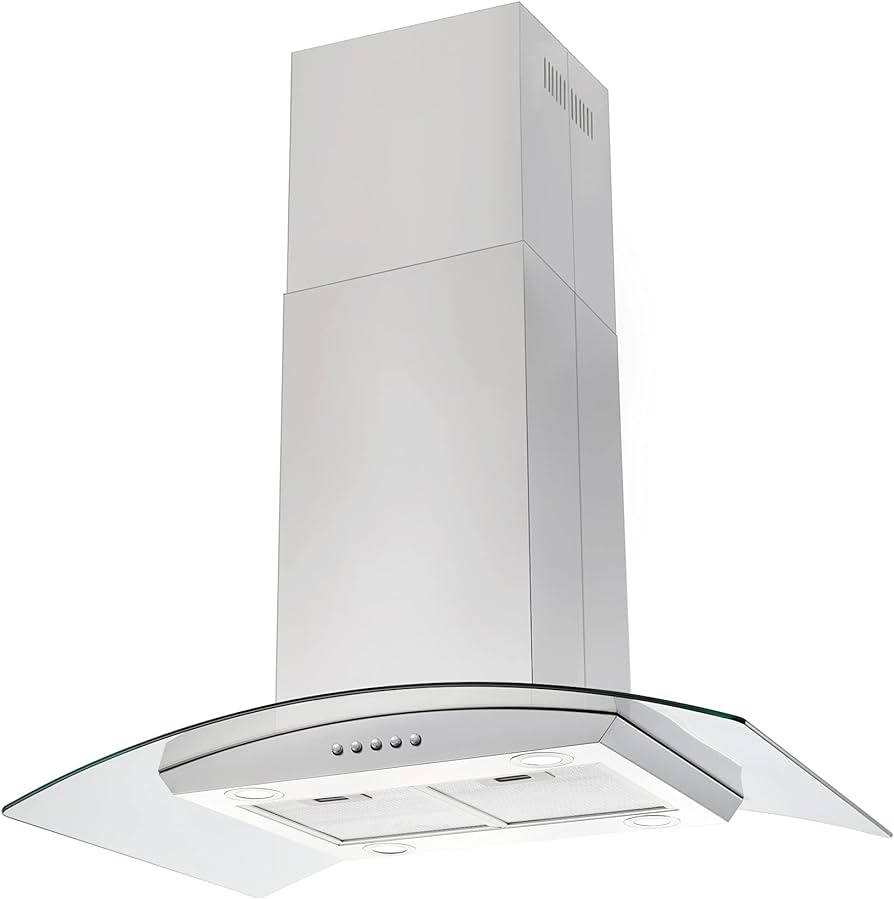
Benefits of Proper Range Hood Distance
Installing a range hood at the correct distance above the range offers numerous benefits, enhancing both the kitchen environment and overall cooking experience.
Effective Ventilation: Maintaining the correct distance allows the hood to effectively capture and expel smoke, steam, and odors, leading to a cleaner and more comfortable cooking environment.
Improved Air Quality: Proper hood placement improves indoor air quality by removing harmful pollutants, allergens, and excess heat. This is particularly beneficial for individuals with respiratory conditions or allergies.
Enhanced Safety: The correct distance minimizes fire hazards and heat exposure to the hood. It also prevents accidental contact with the hood’s edges while cooking, enhancing kitchen safety.
Preventing Grease Build-Up: An optimally positioned range hood reduces grease build-up on kitchen surfaces, cabinets, and the hood itself. This makes cleaning easier and maintains a hygienic kitchen environment.
Aesthetic Appeal: A well-installed range hood complements the kitchen’s design and aesthetics. Proper distance placement ensures the hood looks balanced and integrated with other kitchen elements.
Practical Installation Tips for Range Hoods
Following practical tips and guidelines ensures your range hood is installed correctly, maximizing its performance and safety. Here’s a detailed approach to installing a range hood above a range.
Measure and Mark: Measure the recommended distance (24-30 inches) from the stovetop to where the bottom of the range hood will be positioned. Mark this height on the wall or cabinet to serve as a reference during installation.
Check Electrical Connections: Ensure the electrical connections are in place and compatible with the range hood’s requirements. If necessary, hire a licensed electrician to install or modify electrical wiring.
Positioning the Hood: Align the hood with the marked distance and ensure it’s centered above the stove. Using a level, verify that the hood is straight and properly positioned.
Secure Mounting Brackets: For wall-mounted or under-cabinet hoods, secure the brackets to the wall or cabinetry as per the manufacturer’s instructions. Use appropriate hardware and anchors to ensure a stable installation.
Attach the Range Hood: Mount the range hood onto the secured brackets, ensuring it’s firmly in place. Follow the manufacturer’s instructions for attaching the hood, including any additional support or screws needed.
Connect Ventilation: Attach the ductwork to the range hood’s vent outlet, ensuring a secure and airtight connection. Run the ductwork to the exterior vent, minimizing bends and turns to optimize airflow.
Test and Adjust: Once installed, test the range hood to ensure it’s functioning correctly. Check for proper airflow and any vibrations or noises during operation. Make adjustments as needed to ensure smooth performance.
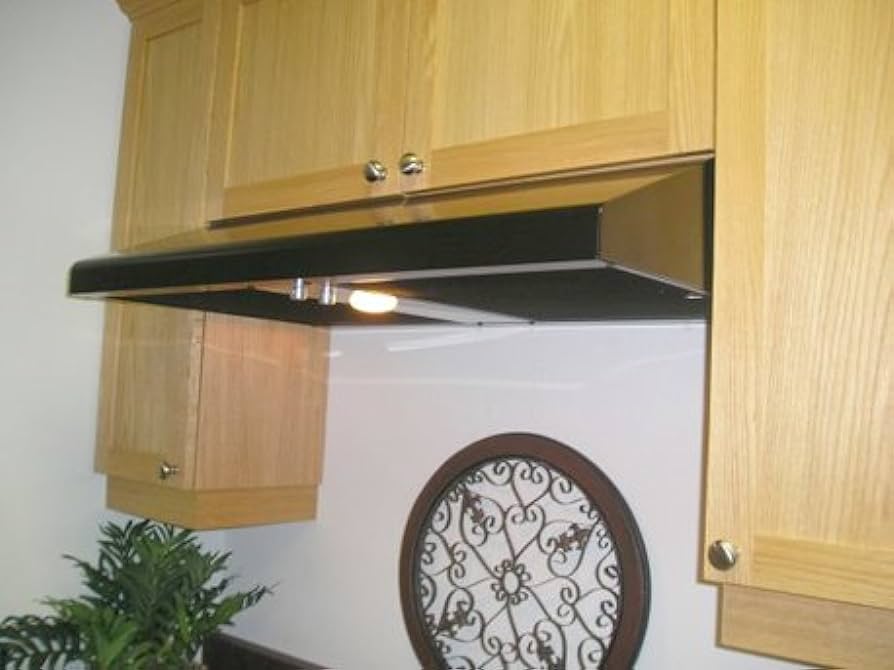
Maintenance and Cleaning of Range Hoods
Regular maintenance and cleaning keep your range hood operating efficiently and extend its lifespan. Here are essential practices to maintain and clean your range hood.
Clean the Filters: Clean or replace the range hood filters regularly, following the manufacturer’s recommendations. Grease and charcoal filters can become clogged and reduce the hood’s efficiency. Dishwasher-safe filters should be cleaned weekly, while charcoal filters need replacement every few months.
Wipe Down Surfaces: Regularly wipe down the exterior and interior surfaces of the range hood with a mild detergent and warm water. Removing grease and grime prevents build-up and maintains the hood’s appearance.
Inspect and Clean the Ventilation Ducts: Periodically inspect and clean the ventilation ducts to prevent blockages and ensure smooth airflow. Accumulated grease and debris can impair the hood’s performance and pose a fire hazard.
Check Fan and Motor: Inspect the fan and motor for any signs of wear or damage. Lubricate moving parts if required and ensure the fan blades are clean. Address any unusual noises or vibrations promptly.
Test the Lights: Test the range hood’s lights regularly and replace any burnt-out bulbs. Proper lighting enhances visibility while cooking and contributes to a safer kitchen environment.
Schedule Professional Service: Schedule professional maintenance and service for your range hood annually. Professional technicians can thoroughly inspect and clean components, ensuring optimal operation and identifying any potential issues.
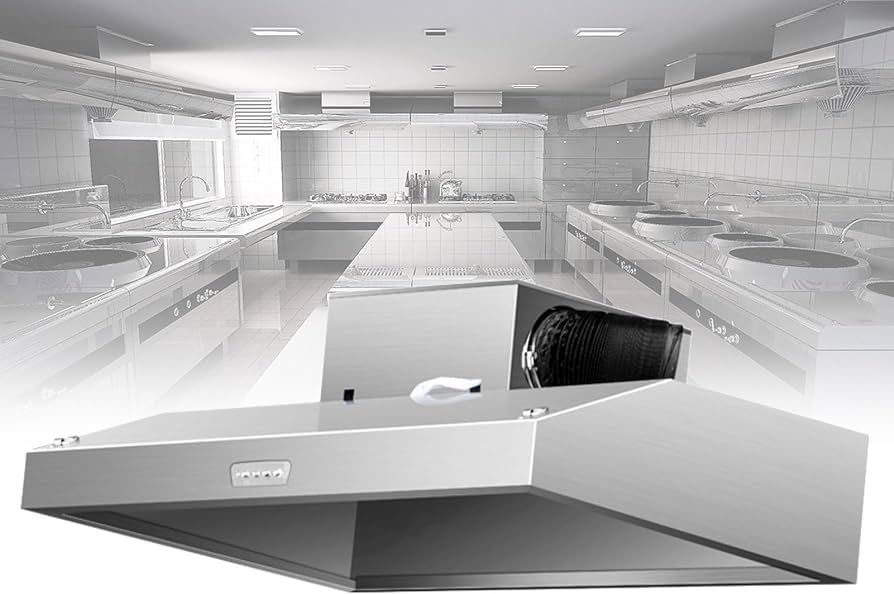
Conclusion
Determining the correct distance between a range and a hood involves understanding standard recommendations, considering various factors, and following practical installation guidelines. Proper placement ensures efficient ventilation, improved air quality, safety, and enhanced kitchen aesthetics. By adhering to the insights provided in this comprehensive guide, you can achieve optimal performance from your range hood, maintain a healthy kitchen environment, and enjoy a better cooking experience. Regular maintenance and addressing common questions further support the longevity and effectiveness of your range hood.


